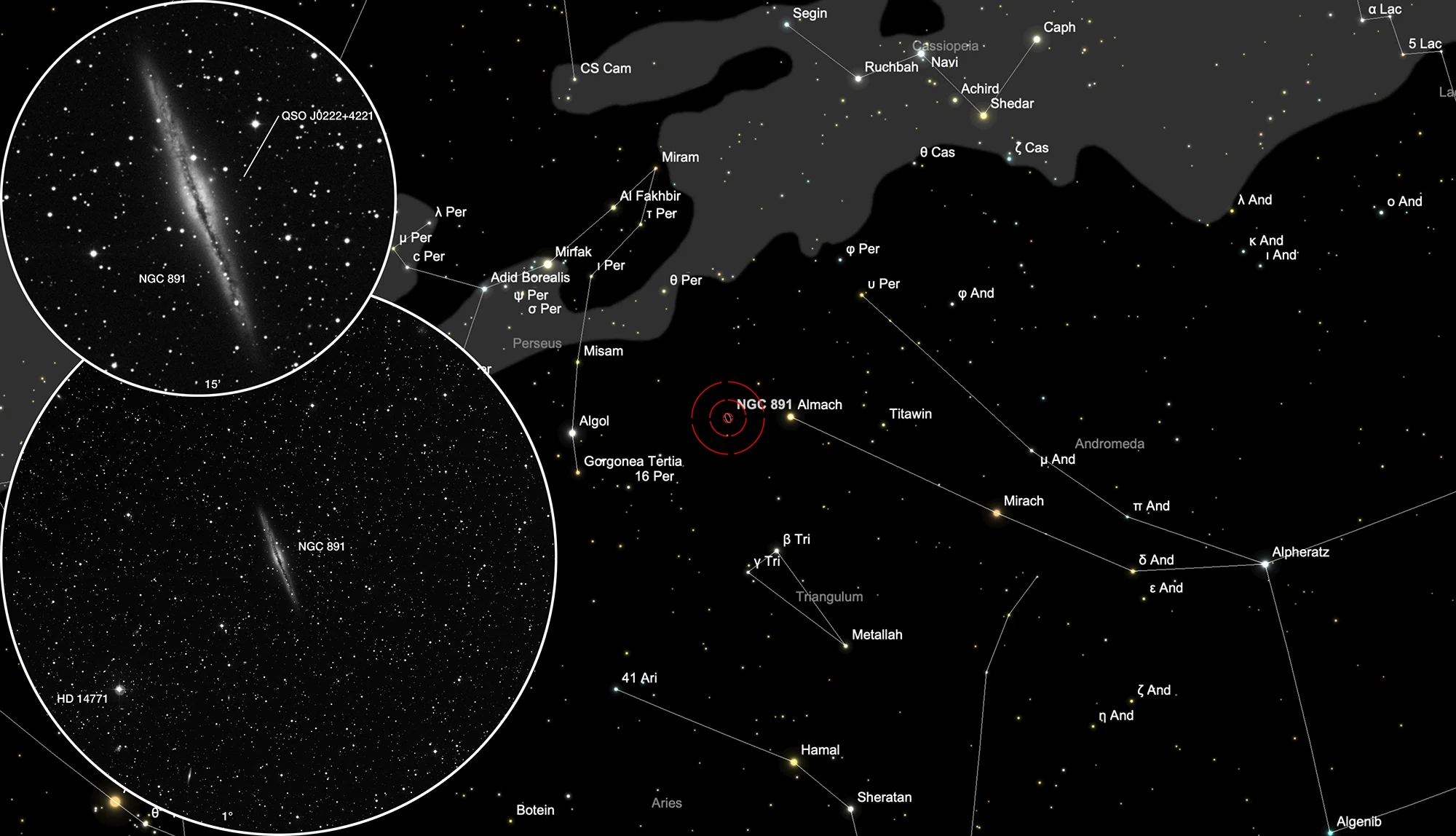Silver Sliver Galaxy (NGC 891)
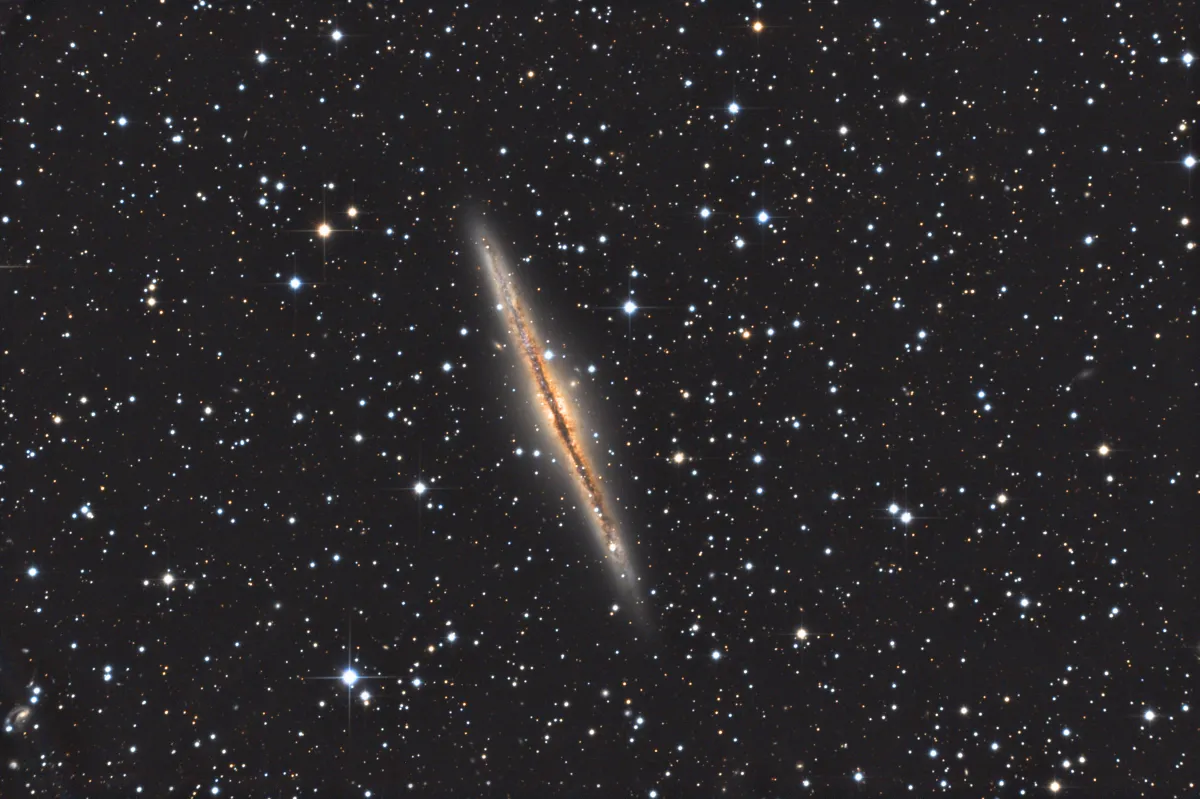
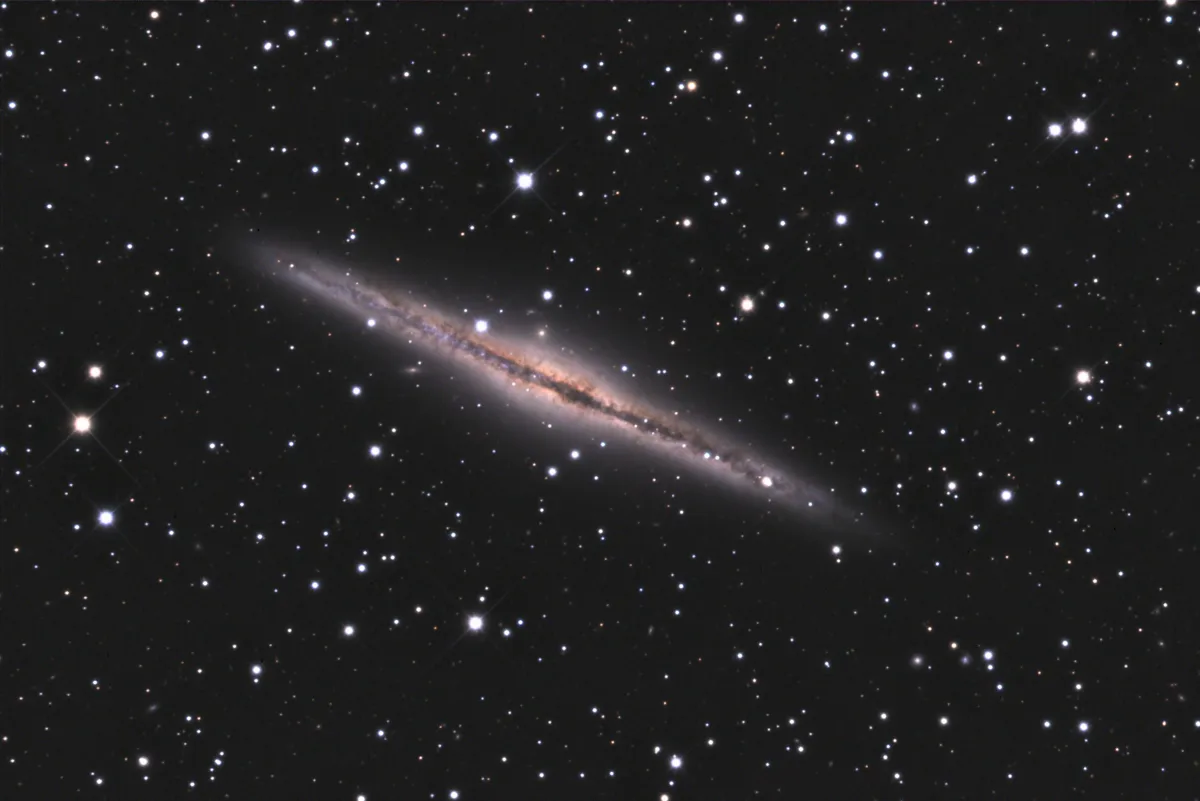
History
This galaxy was discovered, as is so often the case, by William Herschel on 6 October 1784 with his 18.7 inch reflector telescope with a focal length of 20 feet. He entered it as V 19, the class «V» standing for very large nebulae. He described it as follows: «Considerabbly bright, much elongated, above 15' length 3' width, a black division of 3' or 4' length in the middle» [463] John L. E. Dreyer added the galaxy as NGC 891 in his «New General Catalogue of Nebulae and Clusters of Stars». [313] Because of its appearance, it has received the nickname «Silver Sliver» in the English-speaking world.
Physical Properties
The Galaxy NGC 891 is seen edge-on, similar to NGC 4565 in the constellation Coma Berenices. Noticeable is the dense band of dust in the middle. You think you are looking at a miniature version of our Milky Way. In fact, both galaxies are very similar both in appearance and size. The galaxy is of the type SA(s)b? Whereby the «b» for the opening of the spiral is uncertain due to the position of the edge. On Simbad one finds measurements for the speed from 528 km/s to 560 km/s and for the distance from 8.36 Mpc to 10 Mpc. [145]
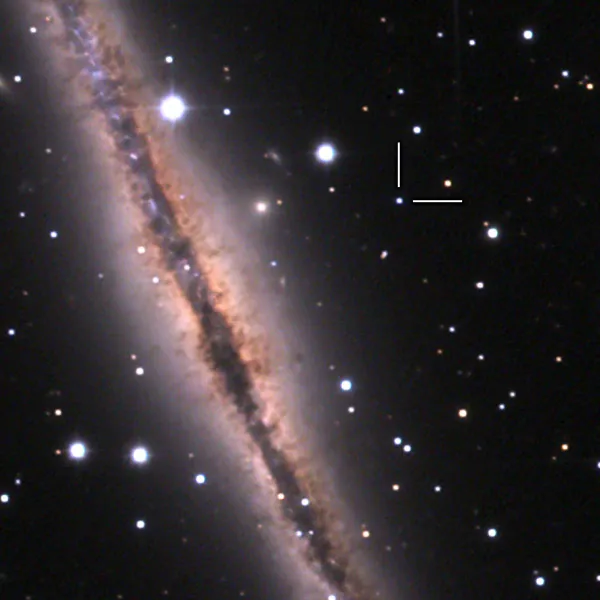
Nearby the galaxy but with a redshift of z ≈ 1.181 and a distance of about 3.7 Gpc (12.3 Gly) much further away lies the quasar QSO J0222+4221 (also known as NGC 891 X4 or CX0 J02224+4221). The quasar is visible at an apparent R magnitude of 17.41. [145]
| Designation | NGC 891 |
| Type | Gx (Sb) |
| Right Ascension (J2000.0) | 02h 22m 33.0s |
| Declination (J2000.0) | +42° 20' 50" |
| Diameter | 11.7 × 1.6 arcmin |
| Photographic (blue) magnitude | 10.8 mag |
| Visual magnitude | 9.9 mag |
| Surface brightness | 13.6 mag·arcmin-2 |
| Position Angle | 22° |
| Redshift (z) | 0.001761 |
| Distance derived from z | 7.44 Mpc |
| Metric Distance | 10.200 Mpc |
| Dreyer Description | ! B, vL, vmE 22° |
| Identification, Remarks | WH V 19; h 218; GC 527; UGC 1831; MCG 7-5-46; CGCG 538-52; IRAS 02195+4209 |
Finder Chart
The galaxy is located in the constellation Andromeda. Connect the two stars Almach (γ1 Andromedae) and Algol (β Persei). The galaxy is located about 3.5° from Almach on this line. NGC 891 is circumpolar, but is highest in the night sky from June to March. On 1 November it is in opposition to the Sun and crosses the meridian at local midnight.
Visual Observation
300 mm Aperture: The galaxy NGC 891 appears as a bright, elongated streak with a thickened centre. The central, dark dust lane is very prominent. With increasing magnification, the contrast against the background of the sky increases. A beautiful sight like a miniature version of our Milky Way. — 300 mm f/4 Popp-Newton, Bernd Nies
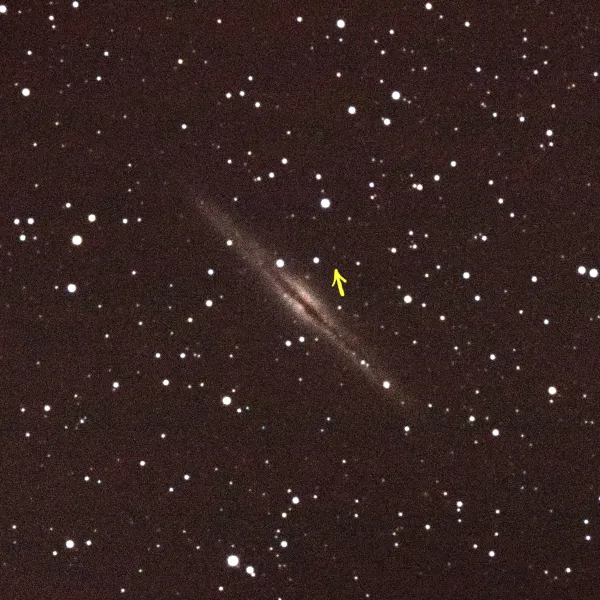
400 mm Aperture: The galaxy with the prominent dust lane is a fine sight with the 9 mm Nagler eyepiece. The position of the quasar could easily be determined based on the two stars near the edge of the galaxy. The third star in that row was only now and then recognizable with averted vision. From the quasar no trace could be seen at all. — 400 mm f/4.5 Taurus Dobsonian, Hasliberg, SQM 21.0, 3. 2. 2024, Bernd Nies
762 mm Aperture: The Quasar QSO J0222+4221 nearby the galaxy NGC 891 posed no problem for the 30" large Dobsonian and the Canon EOS R, which was set to a high sensitivity of ISO 32'000. The Quasar was captured quickly and easily in the image exposed at just 10s clearly identify it. Despite the 30", it is not even close to being visible visually. — 30" SlipStream-Dobson f/3.3, EAA-Photo, Canon EOS R, 10s at ISO 32'000, Hasliberg, 03. 02. 2024, Eduard von Bergen
